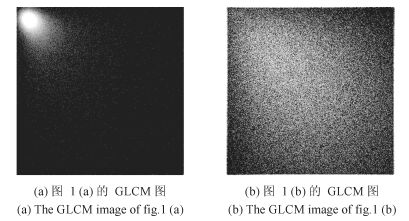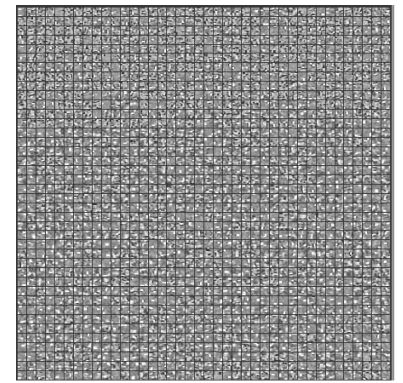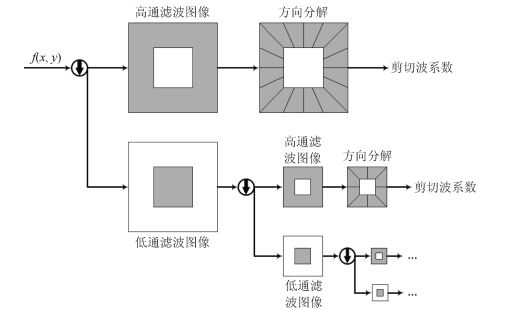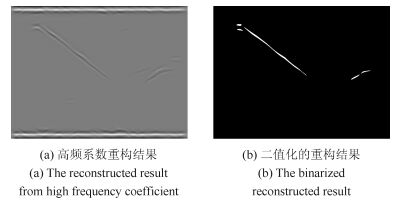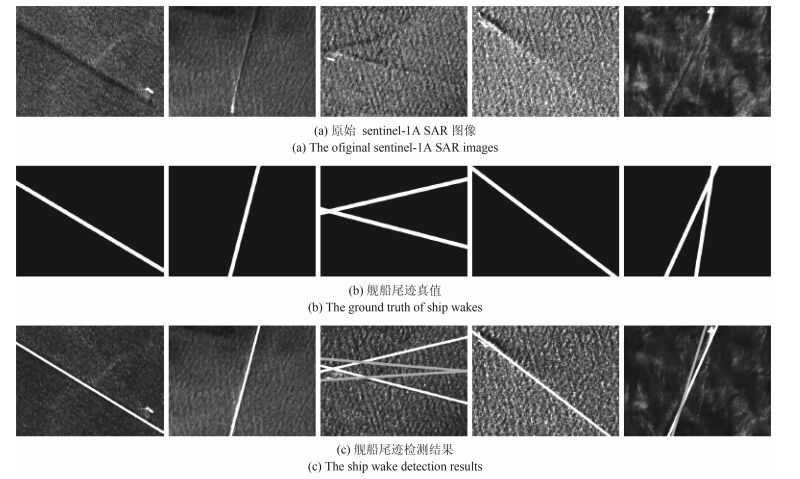Ship Wake Detection in SAR Images with Complex Background Using Morphological Dictionary Learning
-
摘要: SAR图像舰船尾迹检测不仅可用于反演运动舰船的航速航向信息,也有助于发现弱小舰船目标.然而现有舰船尾迹检测方法一般仅适用于简单海况背景下的SAR图像,复杂海况背景下的检测效果难以满足应用需求.本文提出一种基于形态成分分析与多字典学习的复杂背景舰船尾迹检测方法.该方法针对海况背景的复杂多变性以及舰船尾迹类型的有限性,通过离线学习方式构建海面纹理字典,通过解析方式构建尾迹结构字典并迭代更新,将图像分解为包含舰船尾迹的结构成分与包含海面背景的纹理成分,利用剪切波变换对结构成分高频系数重构以增强结构成分,并通过Radon变换对增强后的结构成分进行尾迹线检测.实验结果表明,本文所提方法对于复杂背景SAR图像舰船尾迹检测的效果明显优于现有方法.Abstract: Detection of ship wakes in SAR images is helpful not only in estimating the speed and the direction of moving ships, but also in finding small ship objects. The existing ship wake detection methods for SAR images can achieve satisfactory results only for simple background, but can hardly work for complex background. In this paper, a novel ship wake detection method for complex background based on morphological component analysis (MCA) and multi-dictionary learning. In this method, a SAR image is decomposed into a cartoon component containing ship wakes, and the process of the decomposition is supported by a ship wake dictionary built analytically and renewed iteratively. At the same time, the SAR image is also decomposed into a texture component supported by a sea-surface texture dictionary learnt off-line. Then, the cartoon component is enhanced by the shearlet transform and the high-frequency coefficient reconstruction. At last, the ship wake lines are detected from the enhanced cartoon component by Radon transform. Experimental results show that the performance of the proposed method outperforms other state-of-the-art methods for detection of ship wakes in SAR images with complex background.
-
-
表 1 本文所提方法与NHT和NRT方法的定量评价结果比较
Table 1 Quantitative comparison results of the proposed method with the NHT and the NRT method
NHT方法 NRT方法 本文方法 查全率 0.41 0.22 0.75 查准率 0.39 0.24 0.73 平均运行时间/s 24.684 17.548 42.434 -
[1] Rey M T, Tunaley J K, Folinsbee J T, Jahans P A, Dixon J A, Vant M R. Application of radon transform techniques to wake detection in seasat-a SAR images. IEEE Transactions on Geoscience and Remote Sensing, 1990, 28(4):553-560 doi: 10.1109/TGRS.1990.572948 [2] Lyden J D, Hammond R R, Lyzenga D R, Shuchman R A. Synthetic aperture radar imaging of surface ship wakes. Journal of Geophysical Research:Oceans, 1988, 93(C10):12293-12303 doi: 10.1029/JC093iC10p12293 [3] 种劲松, 朱敏慧. SAR 图像舰船及其尾迹检测研究综述. 电子学 报, 2003, 31(9):1356-1360 http://cdmd.cnki.com.cn/Article/CDMD-90002-2009213906.htmChong Jin-Song, Zhu Min-Hui. Survey of the study on ship and wake detection in SAR imagery. Acta Electronica Sinica, 2003, 31(9):1356-1360 http://cdmd.cnki.com.cn/Article/CDMD-90002-2009213906.htm [4] Kuo J M, Chen K S. The application of wavelets correlator for ship wake detection in SAR images. IEEE Transactions on Geoscience and Remote Sensing, 2003, 41(6):1506-1511 doi: 10.1109/TGRS.2003.811998 [5] Courmontagne P. An improvement of ship wake detection based on the radon transform. Signal Processing, 2005, 85(8):1634-1654 doi: 10.1016/j.sigpro.2005.02.013 [6] Xing X W, Ji K F, Zou H X, Sun J X, Zhou S L, Li Z Y. An enhancing normalized radon transform method for ship wake detection in SAR imagery. In:Proceedings of the 9th European Conference on Synthetic Aperture Radar. Nuremberg, Germany:IEEE, 2012. 559-562 [7] 张明照, 孟涛, 牟建华, 瞿继双, 彭晓军, 刘扬, 夏克寒. 一种海洋合 成孔径雷达图像的舰船尾迹检测方法, 中国专利 CN102542277A,2012 年 7 月Zhang Ming-Zhao, Meng Tao, Mu Jian-Hua, Qu Ji-Shuang, Peng Xiao-Jun, Liu Yang, Xia Ke-Han. Method for detecting ship trail of ocean synthetic aperture radar image, China Patent CN102542277A, July 2012 [8] 王世庆, 金亚秋. SAR 图像船行尾迹检测的 Radon 变换和形态学 图像处理技术. 遥感学报, 2001, 5(4):289-294 doi: 10.11834/jrs.20010408Wang Shi-Qing, Jin Ya-Qiu. Ship wake detection in SAR images based on Radon transformation and morphologic image processing. Journal of Remote Sensing, 2001, 5(4):289-294 doi: 10.11834/jrs.20010408 [9] Mata-Moya D, Jarabo-Amores P, Jimenez-Chaparro B, de Nicolas-Presa J M, Nieto-Borge J C. Application of meanshift filtering to ship wakes detection in SAR images. In:Proceedings of the 8th European Conference on Synthetic Aperture Radar. Aachen, Germany:IEEE, 2010. 1-4 [10] 汤子跃, 朱敏慧, 王卫延. 一种 SAR 图象舰船尾迹的 CFAR 检测 方法. 电子学报, 2002, 30(9):1336-1339 http://www.cnki.com.cn/Article/CJFDTOTAL-DZXU200209021.htmTang Zi-Yue, Zhu Min-Hui, Wang Wei-Yan. A CFAR detection method of ship wakes in SAR images. Acta Electronica Sinica, 2002, 30(9):1336-1339 http://www.cnki.com.cn/Article/CJFDTOTAL-DZXU200209021.htm [11] Copeland A C, Ravichandran G, Trivedi M M. Localized radon transform-based detection of ship wakes in SAR images. IEEE Transactions on Geoscience and Remote Sensing, 1995, 33(1):35-45 doi: 10.1109/36.368224 [12] Graziano M D. SAR-based ship route estimation by wake components detection and classification. In:Proceedings of the 2015 IEEE International Geoscience and Remote Sensing Symposium. Milan, Italy:IEEE, 2015. 3255-3258 [13] 种劲松, 朱敏慧. 基于归一化灰度 Hough 变换的 SAR 图像舰船 尾迹检测算法. 中国图象图形学报, 2004, 9(2):146-150 doi: 10.11834/jig.20040224Chong Jin-Song, Zhu Min-Hui. Ship wake detection algorithm in SAR image based on normalized grey level Hough transform. Journal of Image and Graphics, 2004, 9(2):146-150 doi: 10.11834/jig.20040224 [14] Ai J Q, Qi X Y, Yu W D, Deng Y K, Liu F, Shi L, Jia Y F. A novel ship wake CFAR detection algorithm based on SCR enhancement and normalized Hough transform. IEEE Geoscience and Remote Sensing Letters, 2011, 8(4):681-685 doi: 10.1109/LGRS.2010.2100076 [15] Tunaley J K E, Sibbald T M, Rey-Cousins M T. Use of the Dempster-Shafer algorithm in the detection of ship wakes from synthetic aperture radar images. In:Proceedings of the 1991 International Conference on Acoustics, Speech, and Signal Processing. Toronto, Ont., Canada:IEEE, 1991. 2605-2608 [16] Fitch J P, Lehman S K, Dowla F U, Lu S Y, Johansson E M, Goodman D M. Ship wake-detection procedure using conjugate gradient trained artificial neural networks. IEEE Transactions on Geoscience and Remote Sensing, 1991, 29(5):718-726 doi: 10.1109/36.83986 [17] 陈捷, 陈标, 许素芹. 基于二维连续小波变换的 SAR 图像海洋现 象特征检测. 电子学报, 2010, 38(9):2128-2133Chen Jie, Chen Biao, Xu Su-Qin. Detection of ocean features in SAR images with 2D continuous wavelet power spectrum. Acta Electronica Sinica, 2010, 38(9):2128-2133 [18] Nan J, Wang C, Zhang B, Wu F, Zhang H, Tang Y X. Ship wake CFAR detection algorithm in SAR images based on length normalized scan. In:Proceedings of the 2013 IEEE International Geoscience and Remote Sensing Symposium. Melbourne, Australia:IEEE, 2013. 3562-3565 [19] Fadili J M, Starck J L, Elad M, Donoho D L. Mcalab:reproducible research in signal and image decomposition and inpainting. Computing in Science & Engineering, 2010, 12(1):44-63 http://ieeexplore.ieee.org/xpl/abstractKeywords.jsp?reload=true&arnumber=5372180&contentType=Journals+%26+Magazines [20] Fadili M J, Starck J L, Bobin J, Moudden Y. Image decomposition and separation using sparse representations:an overview. Proceedings of the IEEE, 2010, 98(6):983-994 doi: 10.1109/JPROC.2009.2024776 [21] He Z, Bystrom M. The chordlet transform with an application to shape compression. Signal Processing:Image Communication, 2012, 27(2):140-152 doi: 10.1016/j.image.2011.09.001 [22] Sun J, Ren G Q, Wu Q Z. The easy block Hadamard transform:a new adaptive directional hadamard transform for sparse image representation. Optik-International Journal for Light and Electron Optics, 2014, 125(10):2356-2360 doi: 10.1016/j.ijleo.2013.10.068 [23] Aharon M, Elad M, Bruckstein A. K-SVD:an algorithm for designing overcomplete dictionaries for sparse representation. IEEE Transactions on Signal Processing, 2006, 54(11):4311-4322 doi: 10.1109/TSP.2006.881199 [24] Rubinstein R, Zibulevsky M, Elad M. Efficient Implementation of the K-SVD Algorithm Using Batch Orthogonal Matching Pursuit, Technical Report CS-2008-08, Computer Science Department, Technion-Israel Institute of Technology, Haifa, Israel, 2008 [25] Sadeghi M, Babaie-Zadeh M, Jutten C. Learning overcomplete dictionaries based on atom-by-atom updating. IEEE Transactions on Signal Processing, 2014, 62(4):883-891 doi: 10.1109/TSP.2013.2295062 [26] Mairal J, Bach F, Ponce J, Sapiro G. Online learning for matrix factorization and sparse coding. The Journal of Machine Learning Research, 2010, 11:19-60 http://www.docin.com/p-552552054.html [27] Peyré G, Fadili J, Starck J L. Learning the morphological diversity. SIAM Journal on Imaging Sciences, 2010, 3(3):646-669 doi: 10.1137/090770783 [28] Xie H, Pierce L E, Ulaby F T. Statistical properties of logarithmically transformed speckle. IEEE Transactions on Geoscience and Remote Sensing, 2002, 40(3):721-727 doi: 10.1109/TGRS.2002.1000333 [29] Argenti F, Lapini A, Bianchi T, Alparone L. A tutorial on speckle reduction in synthetic aperture radar images. IEEE Geoscience and Remote Sensing Magazine, 2013, 1(3):6-35 doi: 10.1109/MGRS.2013.2277512 [30] Kuan D T, Sawchuk A A, Strand T C, Chavel P. Adaptive noise smoothing filter for images with signal-dependent noise. IEEE Transactions on Pattern Analysis and Machine Intelligence, 1985, PAMI-7(2):165-177 doi: 10.1109/TPAMI.1985.4767641 [31] Wang Z, Bovik A C, Sheikh H R, Simoncelli E P. Image quality assessment:from error visibility to structural similarity. IEEE Transactions on Image Processing, 2004, 13(4):600-612 doi: 10.1109/TIP.2003.819861 [32] Kutyniok G, Labate D. Shearlets:Multiscale Analysis for Multivariate Data. Boston:Springer-Birkhauser, 2012. 1-38, 239-282 [33] Easley G, Labate D, Lim W Q. Sparse directional image representations using the discrete shearlet transform. Applied and Computational Harmonic Analysis, 2008, 25(1):25-46 doi: 10.1016/j.acha.2007.09.003 [34] Agarwal S, Awan A, Roth D. Learning to detect objects in images via a sparse, part-based representation. IEEE Transactions on Pattern Analysis and Machine Intelligence, 2004, 26(11):1475-1490 doi: 10.1109/TPAMI.2004.108 -





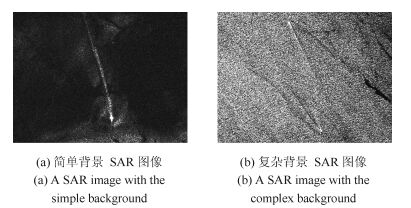
 下载:
下载:
